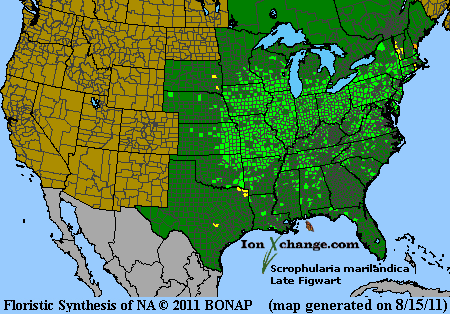 Loading... Please wait...
Loading... Please wait...- Home
- SEEDS
- SEED MIXES
- BUY PLANTS
- Info Request
-
Educational Videos
- Greenhouse Transplanting Demonstration
- Native Seed Cleaning demonstration at Ion Exchange Native Seed and Plant Nursery
- Attracting Butterflies
- Bidens - Bidens cernua Harvest Video
- Big Blue Stem Harvest
- Butterfly Milkweed Video
- Button Blazingstar - Liatris aspera Video
- Buttonbush - Cephalanthus occidentalis Video
- Canada Anemone - Anemone canadensis Harvest Video
- Cardinal Flower - Lobelia cardinalis Video
- Control Burn - Wildflower Field
- Cream Gentian - Gentiana flavida
- Culver's Root - Veronicastrum virginicum Video
- Cup Plant - Silphium perfoliatum Video
- Dormant Seeding | Planting
- Earthyman's Favorite Wildflowers Video
- Eco-Friendly Golf Course Seed Mix
- Floating Islands
- Fringed Loosestrife - Lysimachia ciliata Video
- Giant Yellow Hyssop - Agastache nepetoides Video
- Indiangrass - Sorghastrum nutans Video
- Iowa Prairie Partner Program
- Leadplant - Amorpha canescens (Potted) Video
- Meadow Blazingstar - Liatris ligulistylis
- Midland Shooting Stars - Dodecatheon meadii Video
- Native Plant Nursery Field Irrigation Experiment
- Nodding Onion - Allium cernuum Video
- Ohio spiderwort - Tradescantia ohiensis Video
- Old Man's Beard - Clematis virginiana blooms Video
- Oxeye Sunflower - Heliopsis helianthoides Video
- Prairie Spiderwort - Tradescantia bracteata
- Purple Coneflower - Echinacea purpurea Video
- Rain Garden or Water Garden Video
- Rattlesnake Master - Eryngium yuccifolium Video
- Riverbank Stabilization - Wetland Plants
- Rose Mallow - Hibiscus militaris Video
- Rosinweed - Silphium integrifolium Video
- Royal Catchfly - Silene regia
- Showy Tick Trefoil - Desmodium canadense Video
- Sneezeweed - Helenium autumnale Video
- Swamp Betony - Pedicularis lanceolata Video
- Swamp Milkweed - Asclepias incarnata Video
- Sweet Blackeyed Susan - Rudbeckia subtomentosa Video
- Tall Coreopsis - Coreopsis tripteris Video
- Urban Butterfly Garden
- Wild Bergamot - Monarda fistulosa Video
- Wild Geranium - Geranium maculatum Harvest
- Wild Goldenglow - Rudbeckia lanciniata Video
- Wild Petunia - Ruellia humilis Harvest Video
- Woodland Knotweed - Polygonum virginianum Video
- Yellow Coneflower - Ratibida pinnata Video
- Blog
- Resources
- Policies
Contact Us
Phone:
563-419-0837
or 563-535-7231
Email:
hbright@ionXchange.com
Browse Products
Add to Wish List
You Recently Viewed...
Our Newsletter
Product Description
Scrophularia comes from the Latin word for "swelling of the neck glands", freferring to the genus' medicinal properties. Marilandica is from the Latin term for "of Maryland".
| Sun Exposure | Savanna |
| Soil Moisture | Mesic, Dry Mesic |
| Bloom Time |
Summer, Fall July, August, September, October |
| Bloom Color | Green |
| Max Height | 6 feet |
| Wetland Code | FACU- |
| Germ Code | C(60), D |
| Seeds Per Ounce | 170,000 |
Curious shiny flowers, green outside and brown inside; blooms from July to October; stems turn purple in the fall. Prefers the edges of woodlands and thickets throughout the Tallgrass region. Can reach 8 feet tall.
Native Americans used a tea made from the roots of this plant to treat fevers and piles. It acts as a diuretic and a tonic. Early settlers claimed a couple of different folk remedies from S. marilandica - poulticed as a cancer treatment and as a tonic to treat restlessness, anxiety and sleeplessness in pregnant women.
Edible Uses: Unkown
Medicinal Uses: Alterative, appetizer, diaphoretic, vermifuge and vulnerary.
A tea made from the roots is diuretic, emmenagogue and tonic. It has been used in the treatment of irregular menses, fevers and piles.
Alterative, appetizer, diaphoretic, vermifuge and vulnerary.
A tea made from the roots is diuretic, emmenagogue and tonic. It has been used in the treatment of irregular menses, fevers and piles. A poultice made from the roots is a folk remedy for cancer.
Herbal Uses: Unknown












